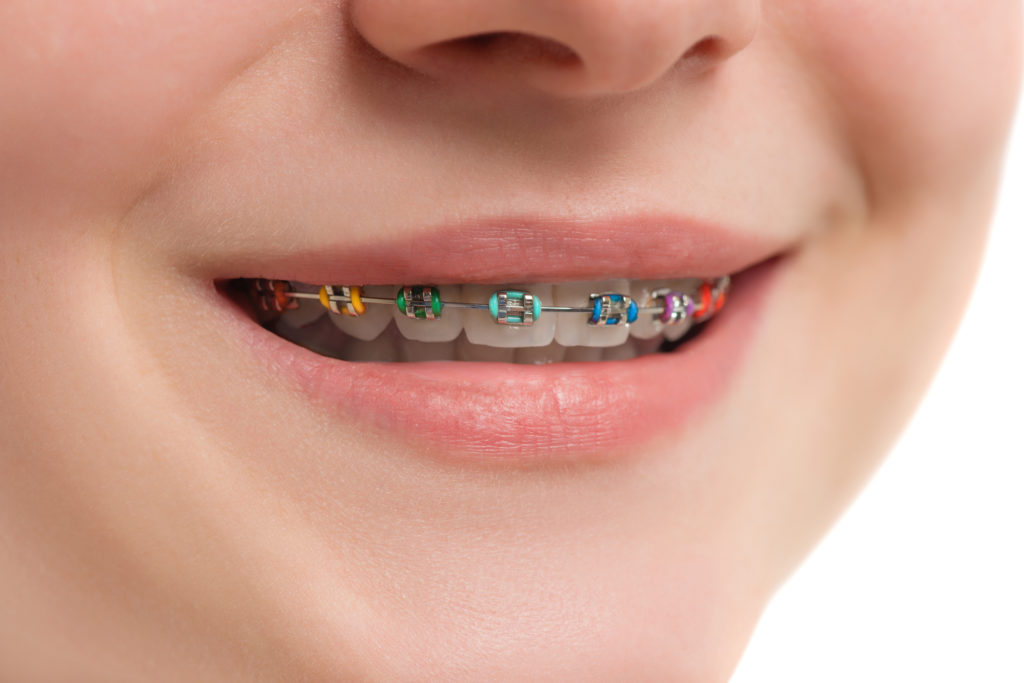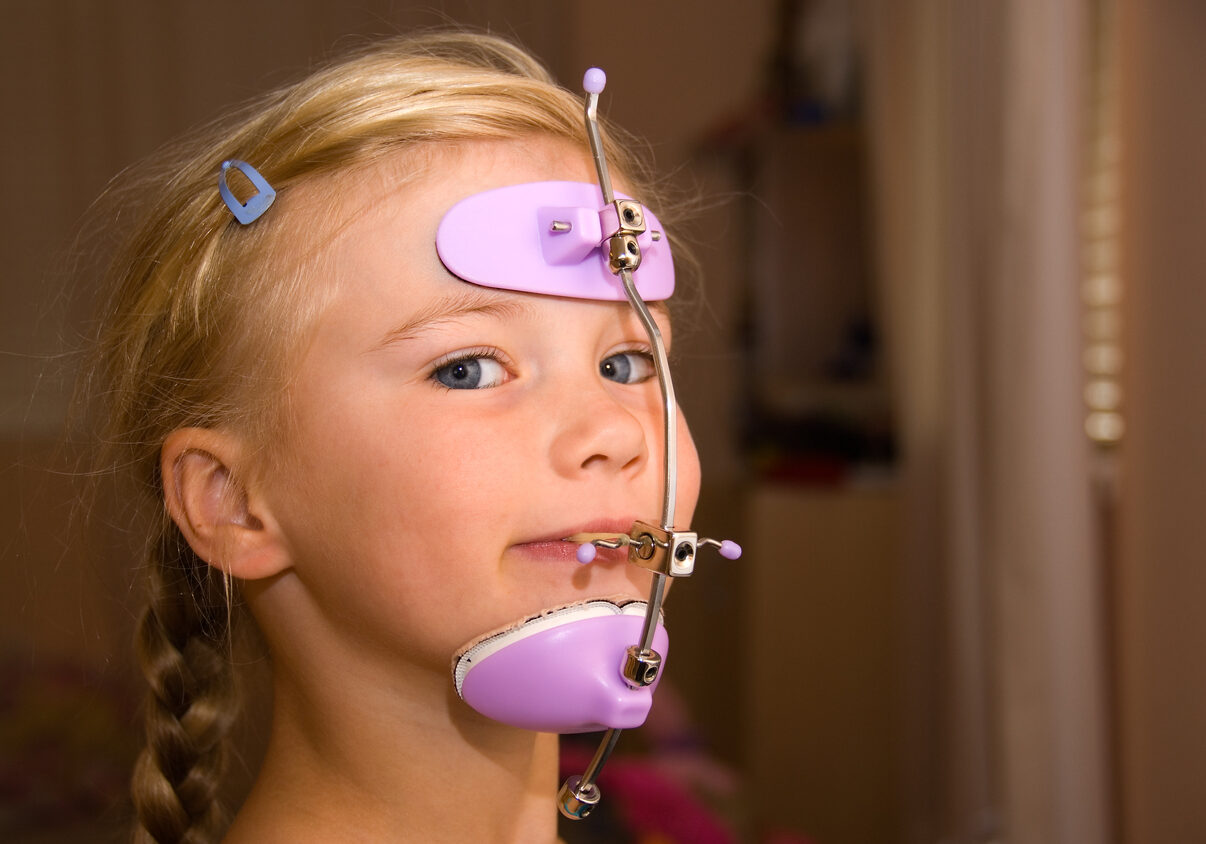
We Can Help You Love Your Smile
Invisalign/Sterling Clear Aligners
Invisalign/Sterling Clear Aligners are an effective, gentle, and invisible way to straighten your teeth. Learn more.
Appliances
It may be necessary to incorporate different appliances to fix problems like an under or crossbite.
Braces
If you have teeth with gaps, a bite that is misaligned or crooked teeth, braces are the go-to solution for getting you the beautiful smile you want. Another benefit of getting braces is to prevent the problems that can arise later if your teeth aren’t straightened. Issues such as chewing problems, widening gaps between teeth and soreness can occur as you age if the alignment of your teeth isn’t addressed early.
Nearly everyone is familiar with the metal brackets, wires and rubber bands that compromise traditional braces. With the advances in technology and materials, we can also offer you different types of braces to fix common dental issues such as crooked teeth, a misaligned bite or both. First, impressions of your teeth, pictures of your face and teeth and x-rays of your teeth are taken to help formulate an individualized treatment plan. Parker Orthodontics then determines which type of braces that will work best based on that information.

How Braces Work
Over a specific period of time, braces work by slowly moving the teeth in a particular direction. This is done using brackets with wires, elastics (rubber bands) or springs attached to them. The wire, elastics and/or springs are then tightened to apply gentle pressure to your teeth. Over the course of treatment, the shape of the underlying bones that support the teeth is also changed. This combination together helps provide lifelong results.
The traditional braces that you might be most familiar with require the brackets be bonded to your teeth. Today’s braces, however, include options for removable brackets. This can make it easier to keep the teeth and gums clean and healthy throughout treatment.

What To Expect With Braces

You’ll be given information regarding the best way to care for your braces as well as any issues that you should be aware of such as what to do if a band breaks or a wire becomes detached. Regular checkups for adjustments will likely be required to ensure that treatment is progressing appropriately. Often patients will need to come in for adjustments every four to six weeks. During that time, the springs, wires or elastics that make up your braces might need to be tightened. This could lead to some discomfort and/or soreness which can be alleviated by taking over-the-counter pain relievers.
There is no set period of time that you can expect to have braces because patients grow at differing rates. That being said, most people have braces for one to three years. The duration depends not only on the growth rate of the patient’s mouth but also on their response to treatment and the severity of the initial dental problem.
Braces For Teens & Adults
Early orthodontic evaluation of children can help ensure that treatment is a success. Often broken into phases, early treatment can help prevent future problems such as a tooth extraction because of a lack of room for all the child’s teeth. Often there is no need for any treatment of a child beyond regular monitoring of his or her teeth.


Types of Braces
The types of braces offered by today’s dental practices extend far beyond the traditional metal brackets that are bonded to your teeth before adding springs, elastics, and wires. Modern braces can be broken down into three broad categories: metal braces, clear braces, and lingual braces.
Metal Braces
These are the traditional braces that come to mind when your dentist tells you that need braces. Comprised of metal brackets that are attached to your teeth, elastics, springs, and wires are then added to help move your teeth and position your bones where they're needed.
Today, this type of braces tends to be smaller and less noticeable than the braces you might remember from your own childhood. New materials and techniques, such as archwires activated by heat, could reduce the time spent in treatment and make the process less painful. Colorful elastic bands provide children and teens with the ability to express themselves while also changing it up every few weeks.


Clear Braces
Though they are similar in size and shape to traditional metal braces, clear braces are made of a tooth-colored or clear material that blends in with your teeth. In some cases, the wires used can also be the same color as your teeth.
This material, which is often ceramic, makes braces less noticeable than metal ones. It's important to follow the care instructions for clear braces because they could become stained. For some patients, using clear braces provides quicker results than using Invisalign.

How Invisalign/Sterling Clear Aligners Work

For adults and certain teens, Invisalign/Sterling Clear Aligners offers them the opportunity to have straight teeth and a healthy smile without the process being noticeable to the casual observer. The custom plastic molds are kept on for at least 22 hours a day and removed only for eating, flossing and brushing.
Throughout the different stages of the Invisalign/Sterling Clear Aligners process, only those particular teeth that have to be moved are included in the mold. This makes the process more efficient. Using Invisalign/Sterling Clear Aligners isn’t relegated only to simple cases. Even those patients who have more complicated orthodontic needs can be helped by using Invisalign/Sterling Clear Aligners.
What To Expect With Invisalign/Sterling Clear Aligners
Once you and your orthodontist have decided that Invisalign/Sterling Clear Aligners is the right choice for you, a customized treatment plan will be developed. This includes digital x-rays and photographs of your teeth. These will be used to create a treatment roadmap for your orthodontist to follow.
The Invisalign/Sterling Clear Aligners software can be used to accurately predict how your treatment will progress over time. You’ll be able to see how your teeth will look at every stage of the process until the end when you have the gorgeous straight smile you’ve always dreamed of.
Many patients require special attachments to be bonded to their teeth. This allows you to clip your aligners into place after you eat or clean your teeth. Because each set of aligners is designed for your teeth to end up where they should at the end of 7 days, they could be uncomfortable when you first starting wearing each new set.

Invisalign/Sterling Clear Aligners For Teens & Adults

The basic premise underlying Invisalign/Sterling Clear Aligners for teens and adults is the same. The series of aligners are molded to suit your particular needs and your mouth. In order to see the best results, it’s necessary to wear the Invisalign molds for at least 22 hours every day — even while you’re sleeping.
Here is where Invisalign/Sterling Clear Aligners for teens and adults differ. Teens are still growing and developing. Their maturity level varies widely across this age group. Many teens simply get busy and forget to put their aligners back in after they eat. Invisalign for Teens features a blue button that keeps track of the hours that the teen has been wearing the device.
Invisalign/Sterling Clear Aligners Cost
The cost of Invisalign/Sterling Clear Aligners varies according to several factors. Dr. Parker and his staff will explain the factors affecting your cost of treatment with Invisalign/Sterling Clear Aligners, and help you determine whether your insurance will help with those costs and how much. Most dental insurance plans cover at least some portion of the cost of Invisalign/Sterling Clear Aligners braces.
We will also work with you to explore other options for payment, including utilizing tax-free dollars, such as flexible spending accounts (FSAs) and health savings accounts (HSAs), or the ability to make monthly payments.

Types of Appliances
There are a number of different types of appliances that an orthodontist might use to help you get the best results from your braces. While the exact appliance that is used and the length of time you need to use it can vary, the information below are some terms you might hear during the course of your treatment:
Elastics
Next, to the metal brackets that are bonded to your teeth during orthodontic treatment with traditional braces, the elastics -- or rubber bands -- are the item that often most visible are the elastics. While the braces are used to straighten your teeth, elastics are designed to address your bite. Today, elastics come in a range of colorful options as well as clear ones if you want to draw less attention to your braces.


Headgear
Headgear refers to appliances that include external parts that use the chin, head and/or neck as a method of bracing and support. While headgear can be used to treat a variety of orthodontic situations, their primary duty is to provide the added anchorage that is necessary to move teeth into their desired position.
Headgear can also be used to mold the position of a patient's facial structure which explains why this type of appliance is often seen on still-growing preteens. In most cases, headgear must be worn for 12 hours each day in order to have the results expected. The length of overall time headgear must be worn varies depending on the unique needs of the patient.
Palatal Expander
A significant advantage of getting an orthodontic evaluation and starting treatment early is that some of the most common structural issues, such as overbites or underbites, can be treated more easily or even prevented altogether. A palatal expander allows an orthodontist to take advantage of a child's natural growth process to prevent such malocclusions like bite issues.
A palatal expander is used to gently create more space within a patient's mouth by widening the upper jaw gradually. Because the upper jaw is made up of two separate parts that don't fuse together completely until puberty, this process is not only possible but easy and tolerable. The most common conditions that call for such an orthodontic appliance are impacted teeth, crowding of the teeth and crossbite.




